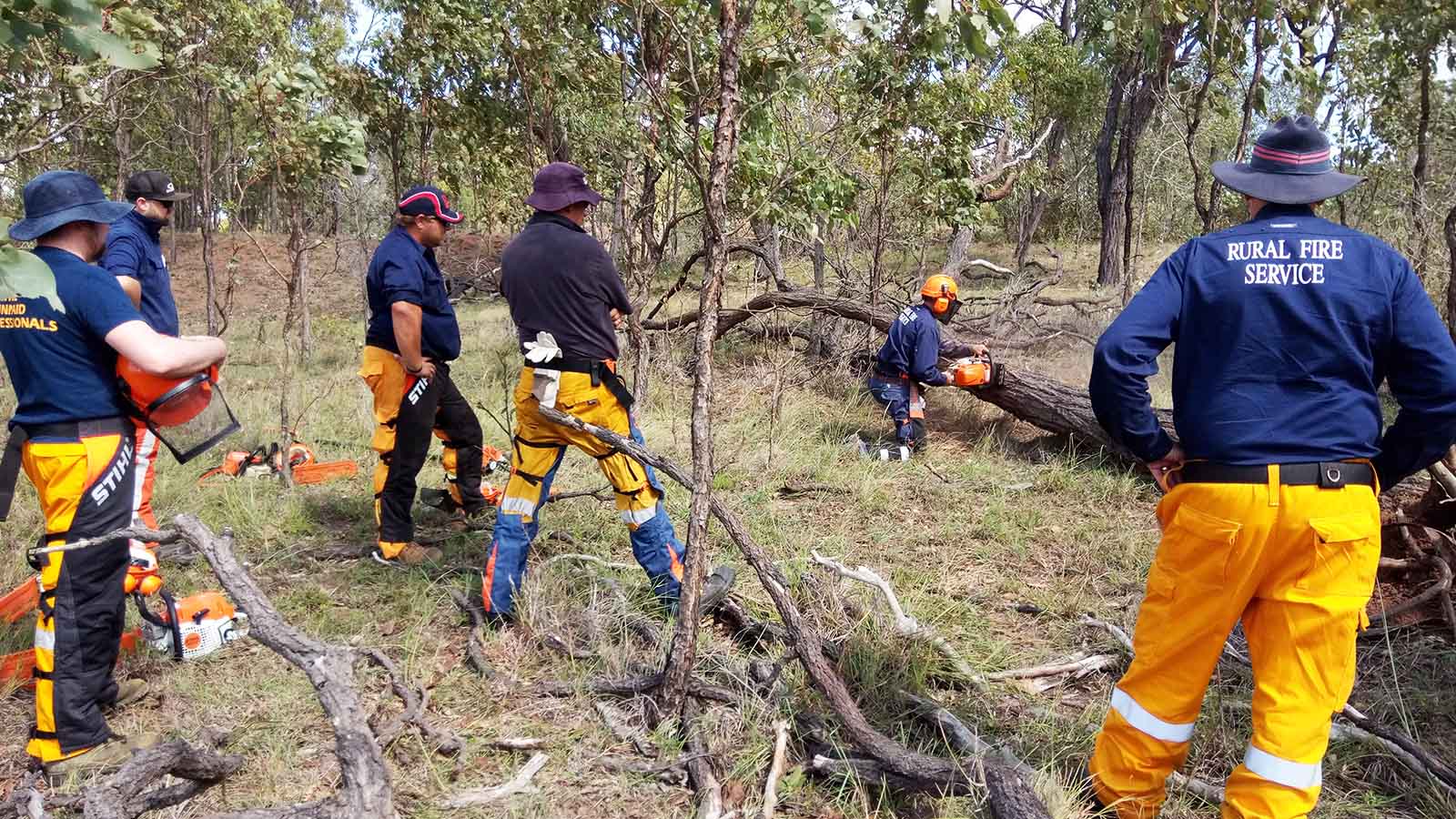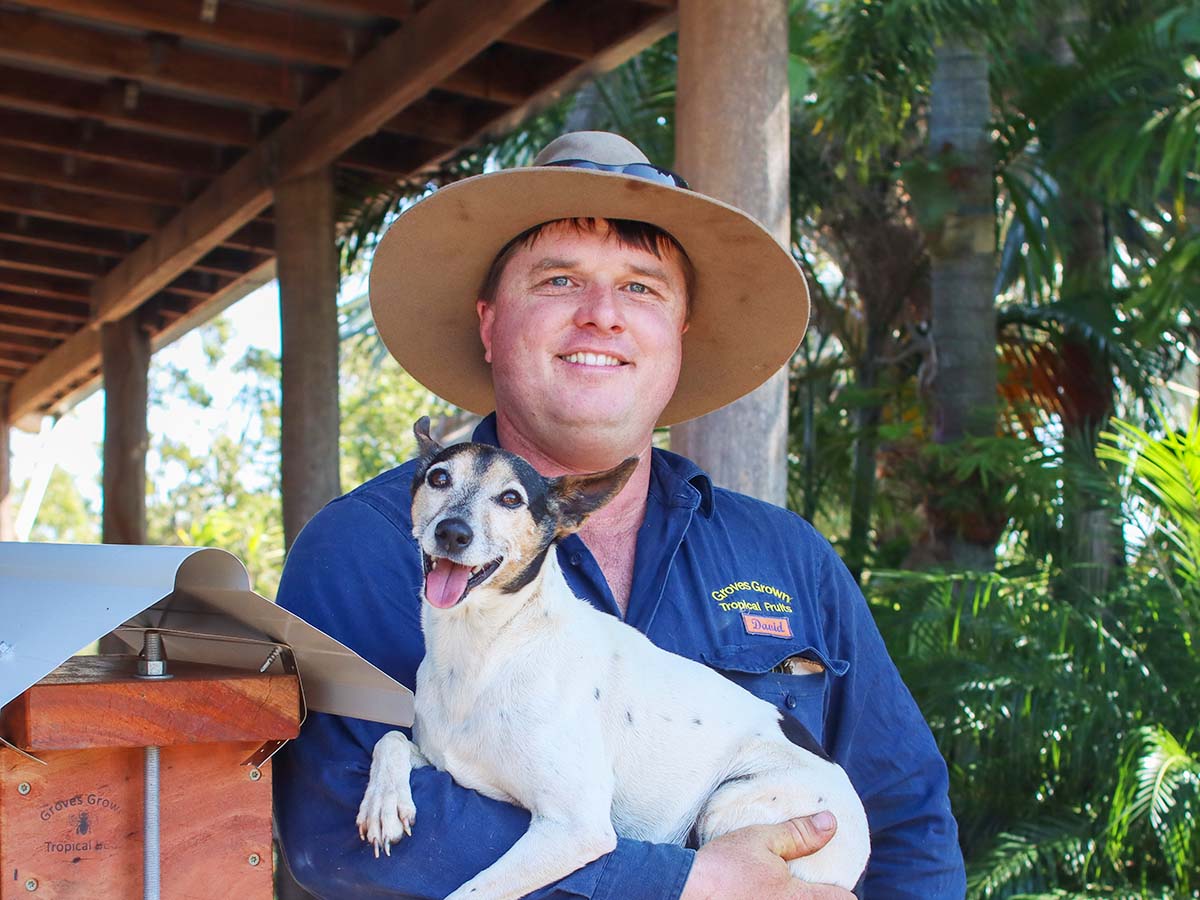1. Join your local rural fire brigade
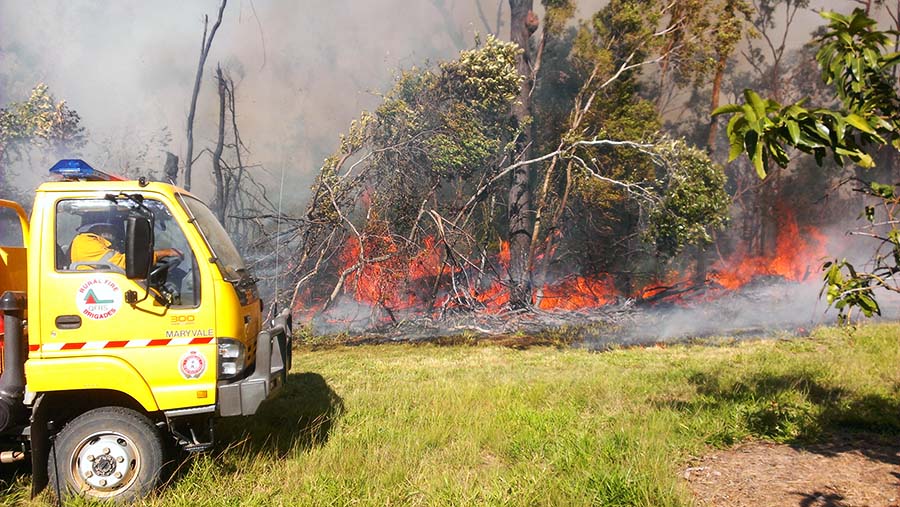 Volunteers for rural fire brigades in Australia are trained to respond to bushfires, as well as house fires, help with natural disaster preparation and clean up, and help the community through hazard reduction burning.
Volunteers for rural fire brigades in Australia are trained to respond to bushfires, as well as house fires, help with natural disaster preparation and clean up, and help the community through hazard reduction burning.
It seems like the obvious first step in bushfire control, but while many think of being volunteers during times of crisis, David says the benefits of being a member leave you with experience and relationships that go far beyond those (hopefully infrequent) emergencies.
'You will learn a lot in the training and the practice, and you'll make good connections with people who just might save your bacon one day, or you just might save theirs,' he says.
As well as the experience and training, volunteering in the local area means David has been invited onto neighbouring properties and, therefore, has better familiarity with the area, being able to identify risks and important tracks that could be useful during bushfires when defending homes and property.
Volunteers for rural fire brigades in Australia are trained to respond to bushfires, as well as house fires, help with natural disaster preparation and clean up, and help the community through hazard reduction burning.
In Australia, rural fire brigades are run by state, but across the board volunteers are required to have at least a criminal history check and in some states, such as Queensland, approval for working with children (a Blue Card).
There are also other roles you can be involved in as a volunteer for rural fire brigades, like community education, administration, communications and incident management.
To find out more about joining your state's volunteer firefighting service, visit New South Wales RFS, Queensland RFBAQ, Victoria CFA, South Australia CFS, Western Australia DFES, Northern Territory PFES, or Tasmania Fire Service.
2. Fuel reduction/bush management
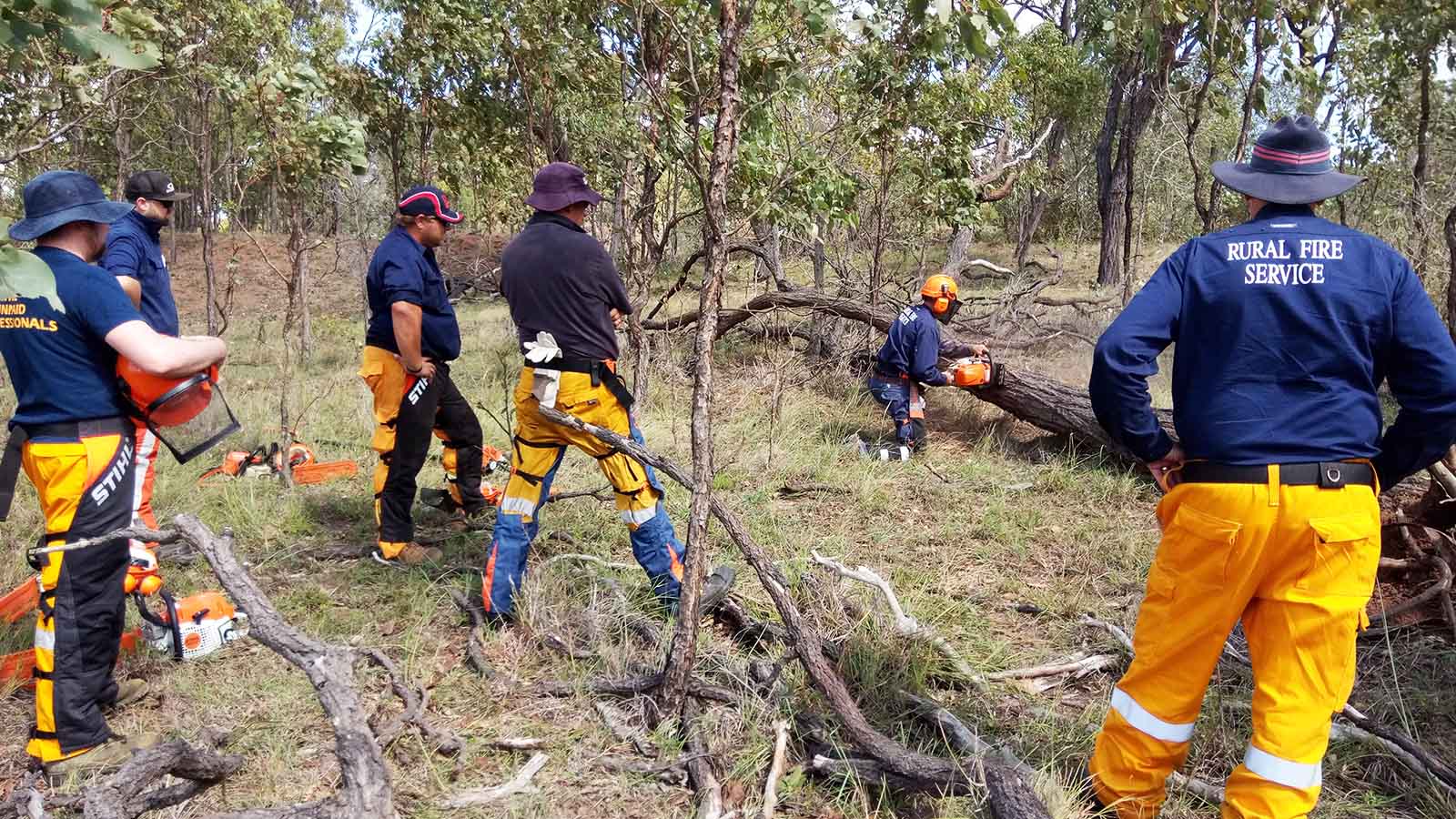 Landowners should reduce debris that provides fuel to bushfires, so when a fire does come through, the heat and intensity is less, giving firefighters time to get the blaze under control.
Landowners should reduce debris that provides fuel to bushfires, so when a fire does come through, the heat and intensity is less, giving firefighters time to get the blaze under control.
The Cobraball fires were made harder to control due to massive fuel loads left over from cyclone Marcia decimating the bushland in 2015.
Some areas fared better than others, as several rural fire brigades had spent years reducing those fuel loads through hazard reduction burns (also known as cool burns).
Property owners have a responsibility to manage the bush on their land, but how they do that is up to them. David says the primary goal is to reduce the debris that provides fuel to bushfires, so when a fire does come through, the heat and intensity is less, giving firefighters time to get the blaze under control. Cool burns kill less trees than a hot bushfire, and give firefighters a better chance of stopping one.
In Australia, First Nations people have managed the landscape for tens of thousands of years by mosaic or cool burning, which is the selective burning of undergrowth, where the fire burns at a lower heat intensity than a bushfire. Since European settlement, introduced exotic plants have made the bushland harder to manage, creating higher fuel loads. How often cool burns are required is dependent on the type of bushland, the seasons, the environment and the country, but over burning areas can raise the risk because bare ground and open canopy encourages the growth of high-biomass exotic grasses, thereby creating a bigger fuel load.
David says regardless of the method, the goal is to break the chain of ladder fuels that connect the forest floor to tree canopies. Once fires spread to canopy level, controlling them becomes almost impossible.
...over burning areas can raise the risk because bare ground and open canopy encourages the growth of high-biomass exotic grasses, thereby creating a bigger fuel load.
Beyond hazard reduction burns, property owners also have other options. In open paddocks, producers can graze country, slash or mow. In areas that are difficult to get to with vehicles but that have fodder-like grasses or broadleaf weeds, some have turned to using goats, such as Queensland Rail has done, as seen in this ABC article.
On the Groves Grown Tropical Fruit farm, steep gullies could only be controlled with grazing cattle, with alleys fenced off for grazing. But as more flat grazing country was converted to orchards, David found a new solution for the heavily fueled areas.
Rather than grazing or spraying out grass from the gullies, he's created 'green breaks' by planting trees that don't burn easily, such as rainforest trees, bush tucker plants, fig trees or cabinet timber trees. For these areas, David specifically avoids any eucalypts or anything with oil in the leaves.
3. Build your own firefighting capabilities outside the rural fire brigade
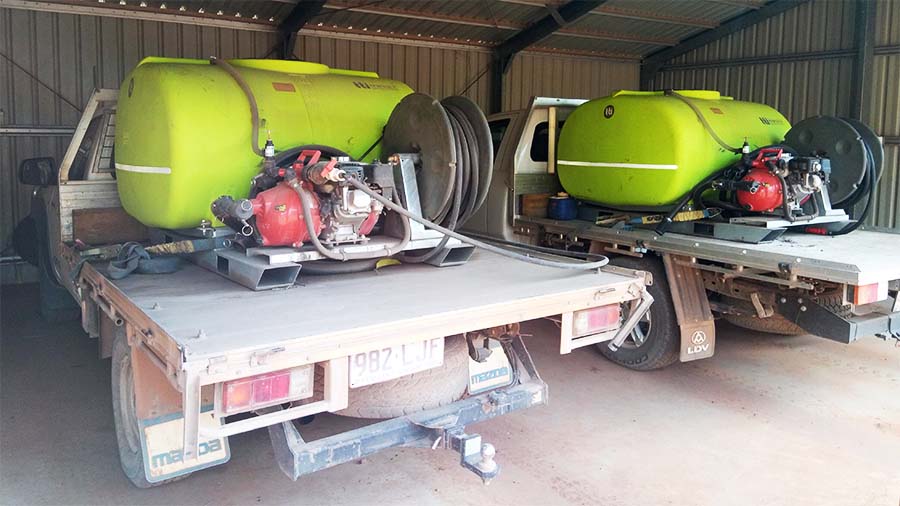 David recommends investing your own firefighting capabilities like these slip-on units made up of a water tank, pump and hose.
David recommends investing your own firefighting capabilities like these slip-on units made up of a water tank, pump and hose.
The rural fire brigade service is a vital part of emergency services in regional areas, with a strong charter to protect lives, property and then the environment. However, for those who make their money from the land, prioritising what to protect on their own property might be different, due to what is and isn't insured. Rural brigades also have limited resources, or may not make it quickly to properties when a fire starts.
For these reasons and more, David believes having the personal capacity to fight fires without rural brigade resources is important.
Personal firefighting kits can be as cheap or expensive as your budget and determination allows. Commercial slip-on units made up of a water tank, pump and hose are available in various sizes and capacities, from compact units for side-by-side vehicles, to larger setups for utes and trucks. Slip-on units can be easily installed via a forklift, and chained in place. A cheaper solution is an IBC (intermediate bulk container) tank, also known as a pallet tank, with an easily installed pump and hose.
After a nearby incident David attended as a volunteer in the lead up to the 2019 bushfire season, he worried he didn't have enough firefighting capacity for the farm. He ordered a second slip-on unit, which arrived 11 days before the Cobraball fire. It ended up being a vital piece of kit after the 16-kilometre fire front threatened both blocks of land at once.
'If we only had the one we would have had to focus on defending the home farm, and there would have been no second unit to look after the second property,' he says. 'We'd never considered that both properties would be under attack at the same time.'
4. Prepare your infrastructure as best you can
Over the past few years, there has been a dramatic rise in the number of fires caused by lithium-ion batteries. Lithium-ion batteries are found in numerous portable devices, from phones, tablets and tech, to appliances and tools, as well as electric bikes and scooters.
Fire and Rescue NSW have named them the fastest growing fire risk in New South Wales, and recommend checking smoke alarms are working in rooms where batteries are charged or stored, and charging large batteries in the garage, shed or carport, away from living spaces.
After David attended a fire at a timber shed on a neighbour's property, believed to be started from a drill battery, he started taking steps to avoid something similar happening at home.
'We used to charge [batteries] in the tractor shed, and there can be leaves on the floor, and tractors around... any sort of fire might burn your entire fleet of machinery, which could be catastrophic for the business,' David says.
To protect equipment and machinery, David's in the process of building an annex to the tractor shed, to have one space to charge anything from chainsaw batteries to drill batteries and tractor batteries.
'It's attached to the main shed, but it's completely walled off by metal walls, and we'll probably end up putting a steel bench with all the chargers, and the chargers might be separated by metal dividers as well.'
The extra annex will be kept clear of anything flammable, with no insulation, and the wall connecting the annex to the shed will be concreted into the floor.
Around sheds and important infrastructure, David says firebreaks of clear land can make or break whether things can be saved during a bushfire. They're often as simple as a road cleared by a dozer, front end loader or grader, but the rules as to how wide a fire break should be vary from state to state.
While inter-row grass in the tropical fruit orchard is a part of the sustainability ethos on Groves Grown Tropical Fruit to avoid erosion and runoff, for safety's sake, the grass is kept mown and short during the dry season.
5. Safe behaviour during high risk periods
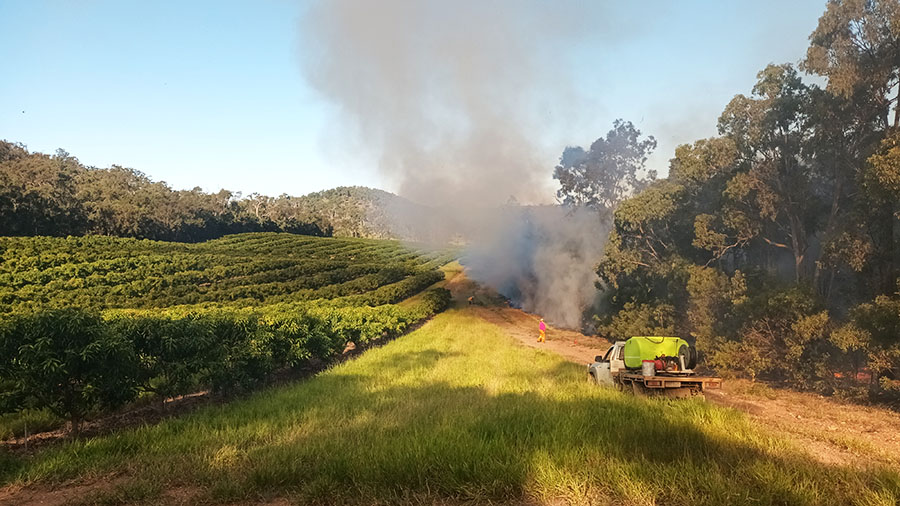 While undertaking activities that could cause sparks in dry conditions, David always keeps a ute with a 1,000-litre slip-on unit in the paddock.
While undertaking activities that could cause sparks in dry conditions, David always keeps a ute with a 1,000-litre slip-on unit in the paddock.
It's an all too common occurrence, but bushfires can be started by people trying to do the right thing. David has attended a number of bushfires started by property owners attempting to reduce the risk by slashing their firebreaks in the lead up to high risk conditions.
When it's hot, dry and windy, it's recommended to avoid doing any potentially dangerous activities, like slashing and mowing, grinding or welding - anything that could send up sparks.
'There are some times when it's unavoidable, and you have to do a high risk activity during a high risk fire period. But it's within reason; there are days where it just isn't worth it,' he says.
For those times, like needing to bale hay while it's dry, David recommends being ready for all worst case scenarios.
While baling hay, and there's risk of a fire that could spread, David always keeps a ute with a 1,000-litre slip-on unit in the paddock, able to be reached if something were to happen.
'But it's within reason; there are days where [a high risk activity] just isn't worth it'
For far less drastic situations, David also keeps a fire beater cable-tied to slashers. Fire beaters are easily purchased or made, with a thick rubber flap attached to a shovel handle, and can be detached and used to put out fires quickly and easily.
'I've started several fires with the mower,' David says. 'They never get [larger] than a metre squared [due to having a fire beater close at hand]. But as long as you keep a close eye over your shoulder [as you work] and you've got the right tool with you right there [then you can] put the fire out straight away.'

